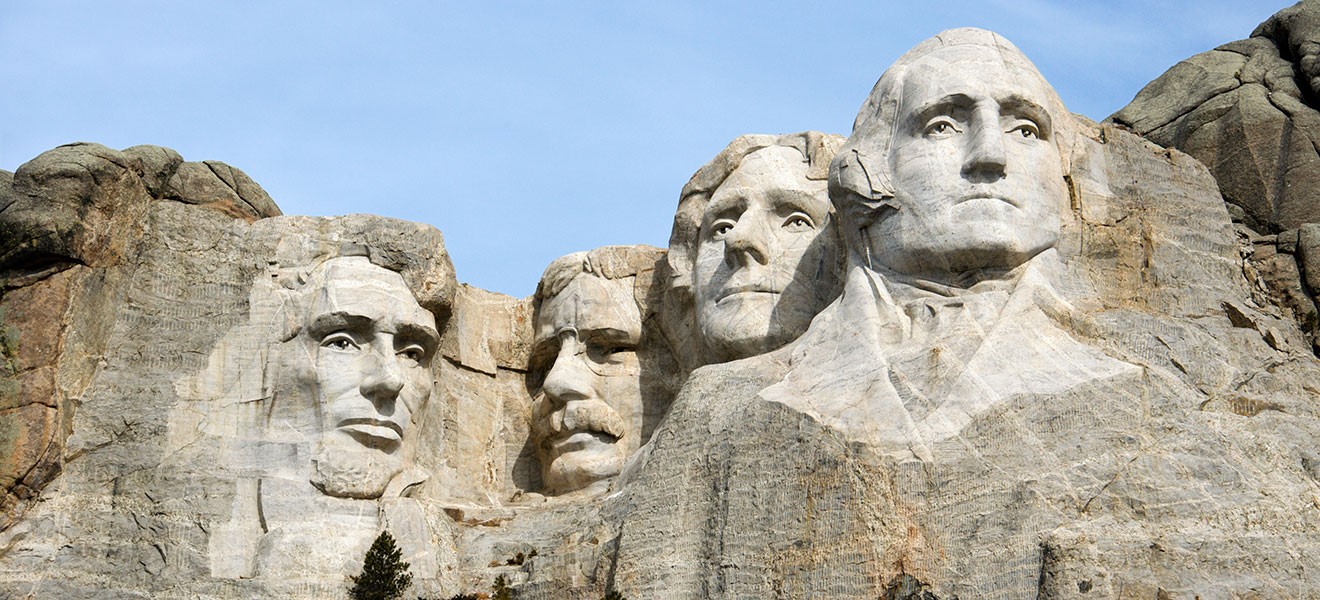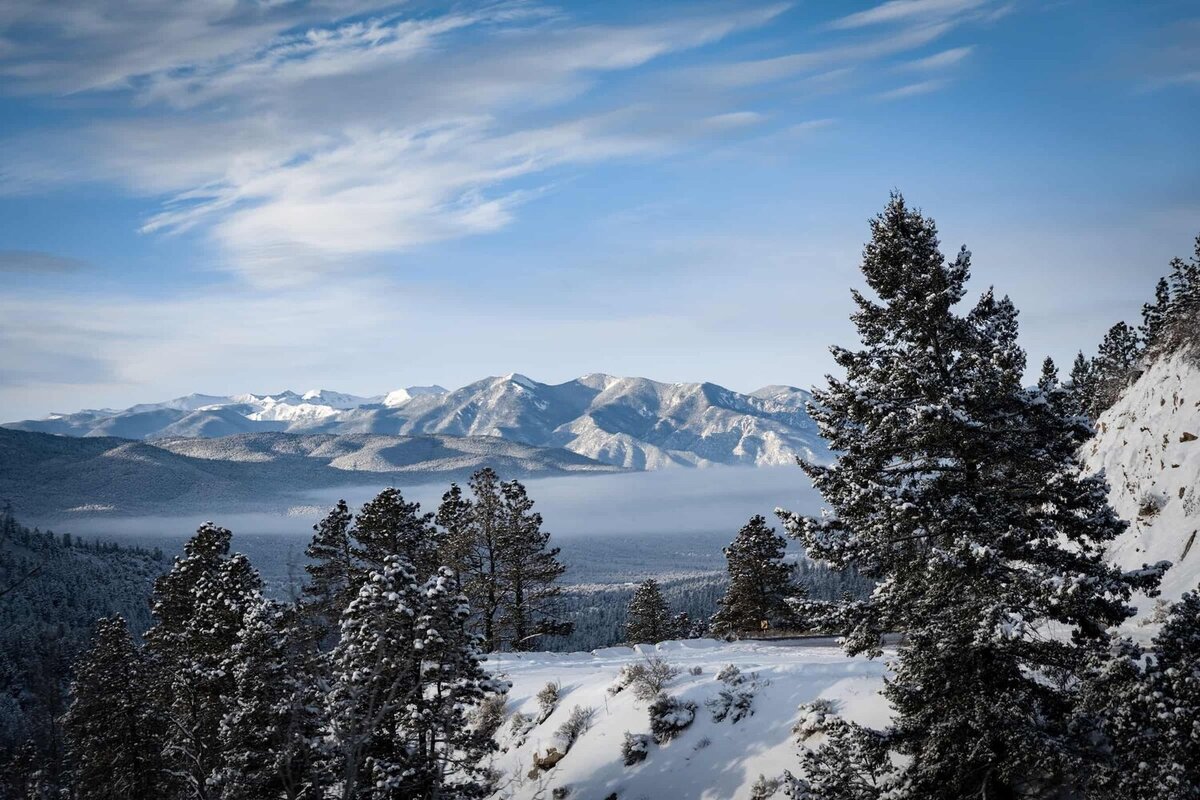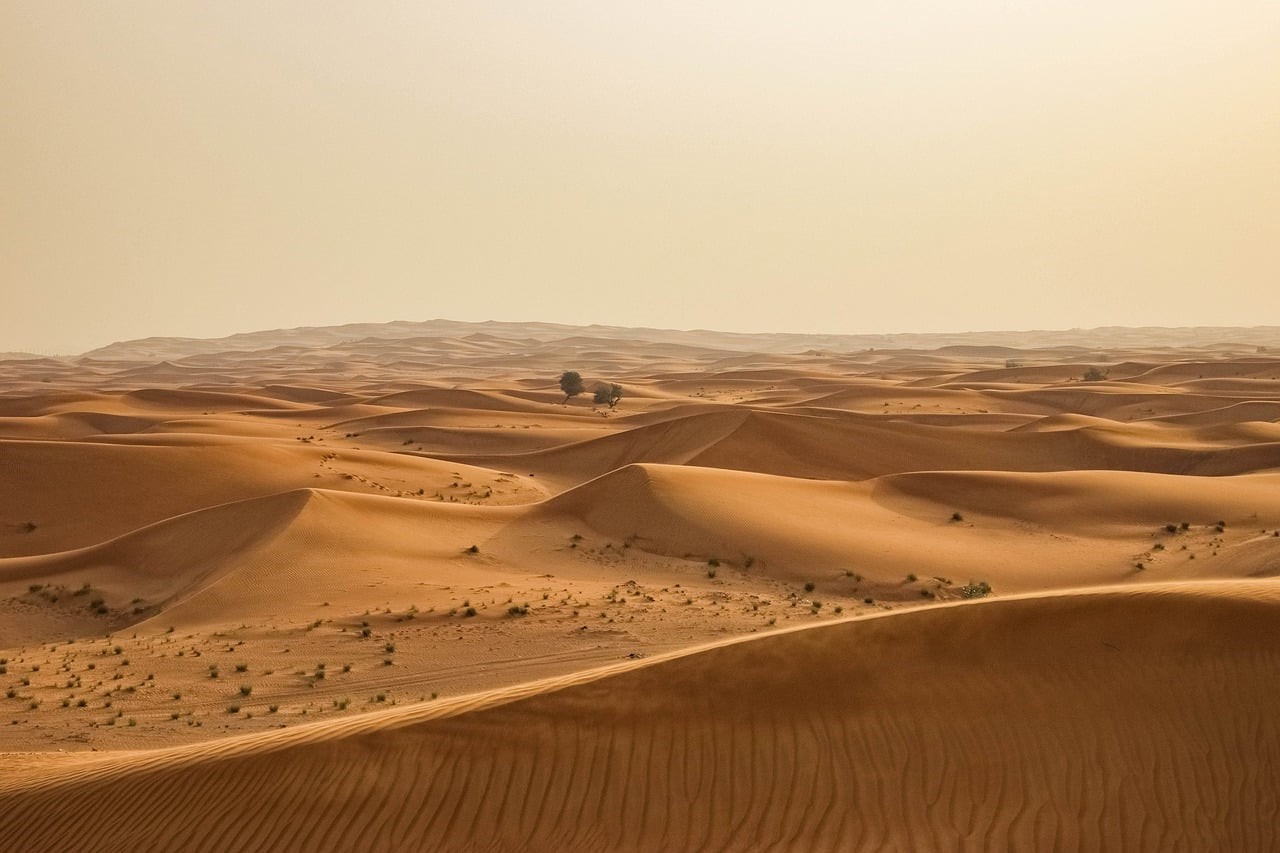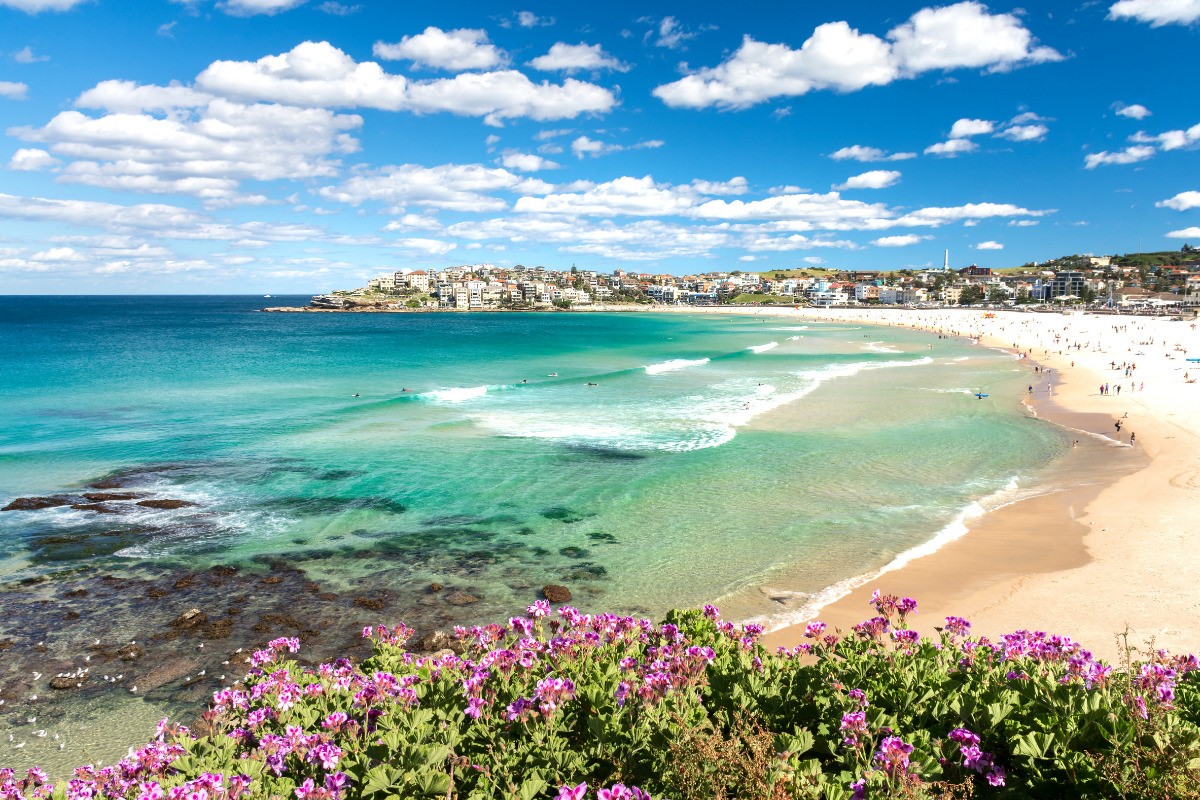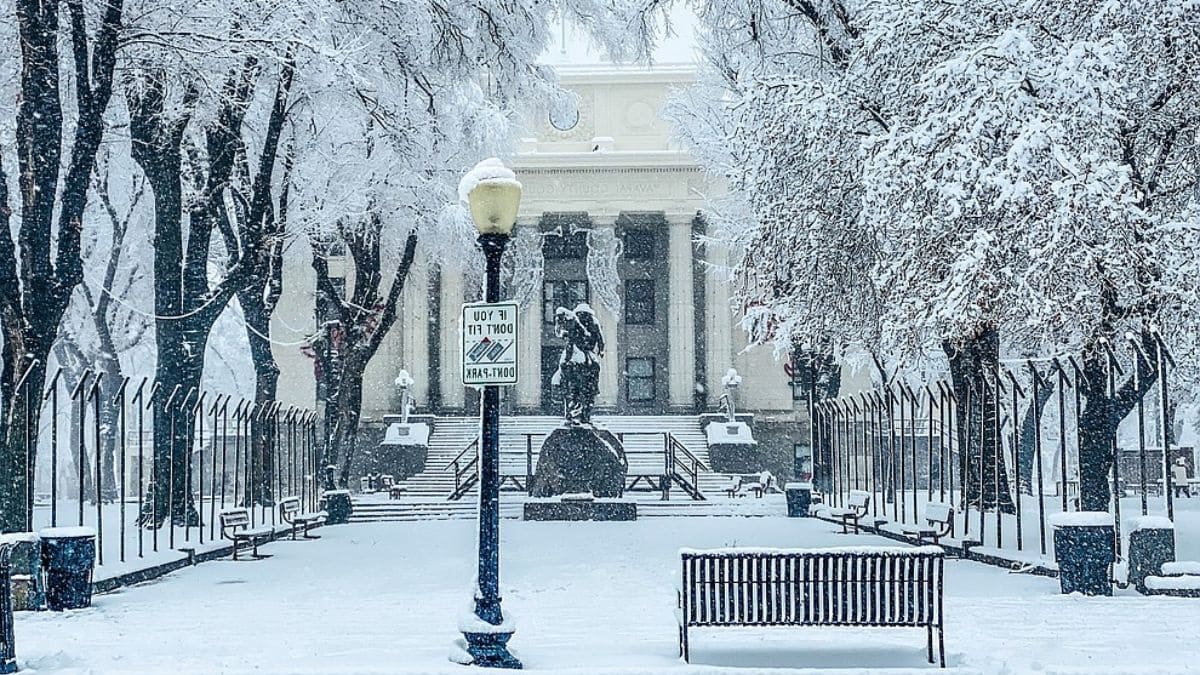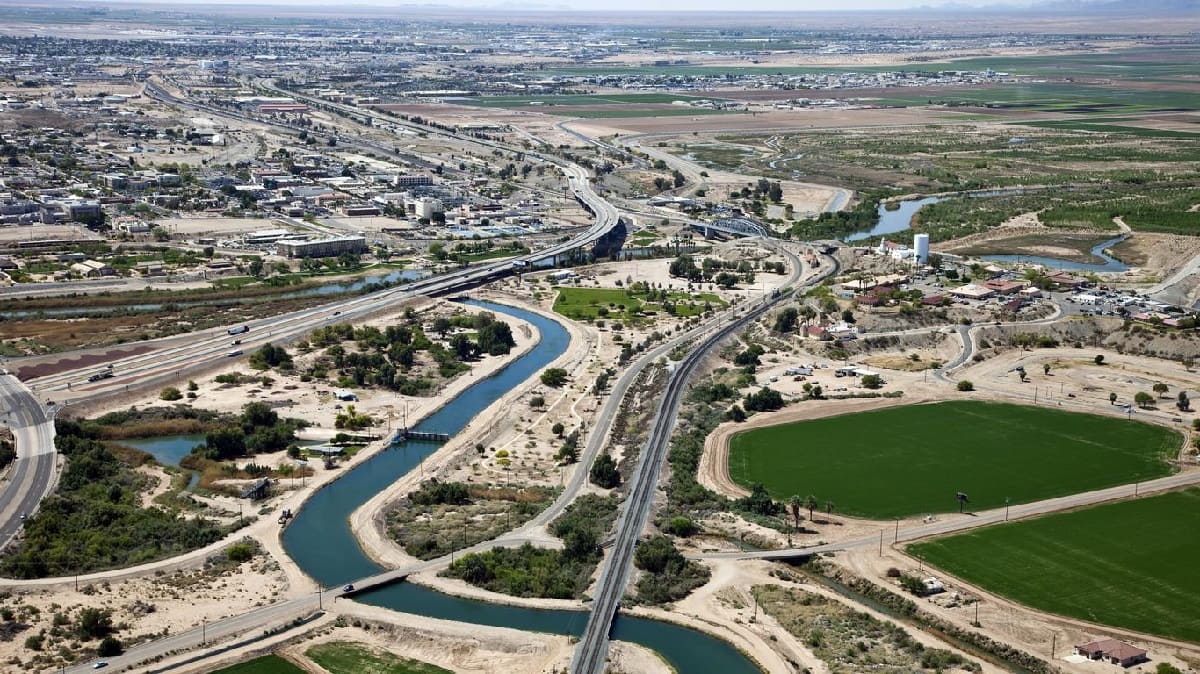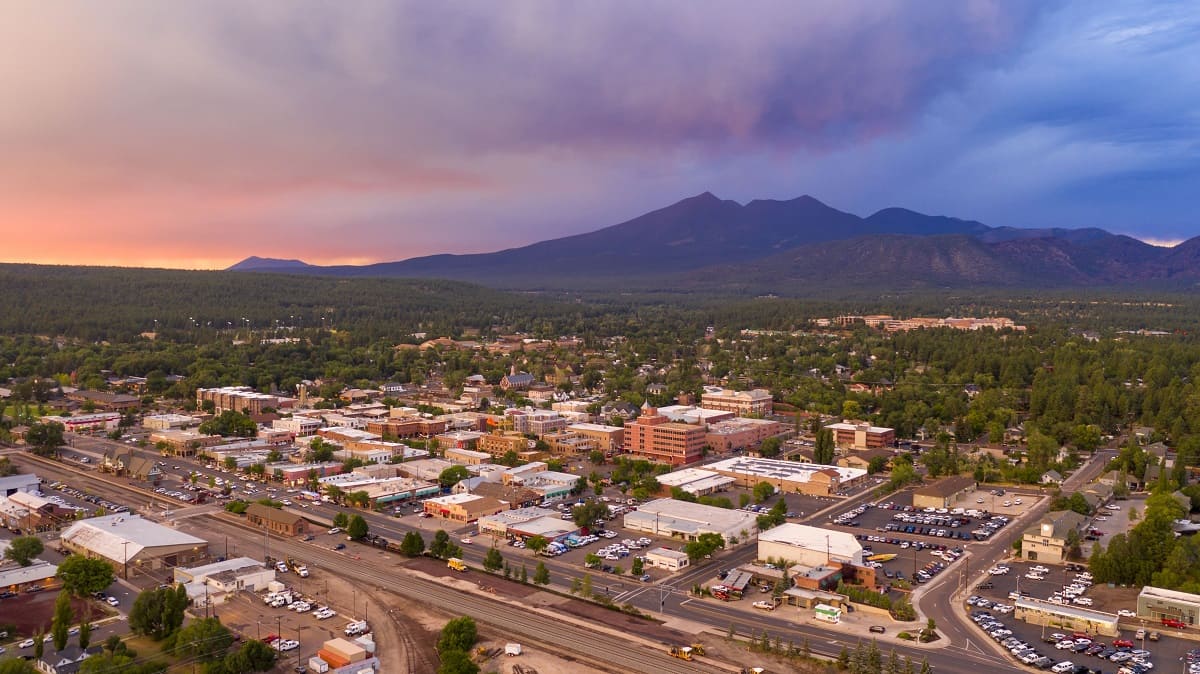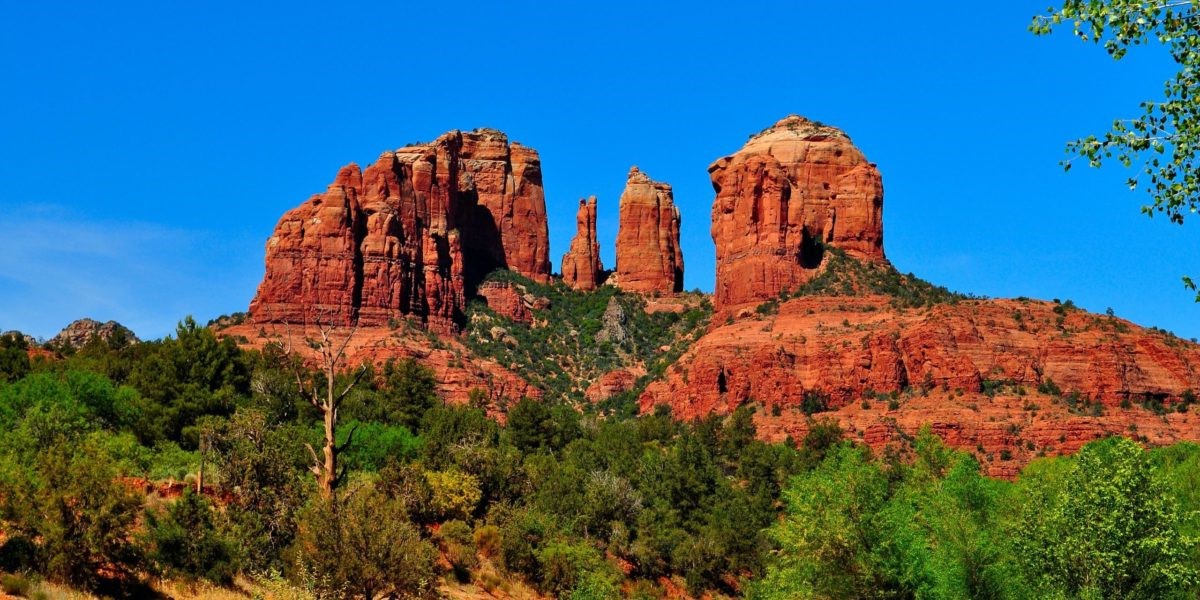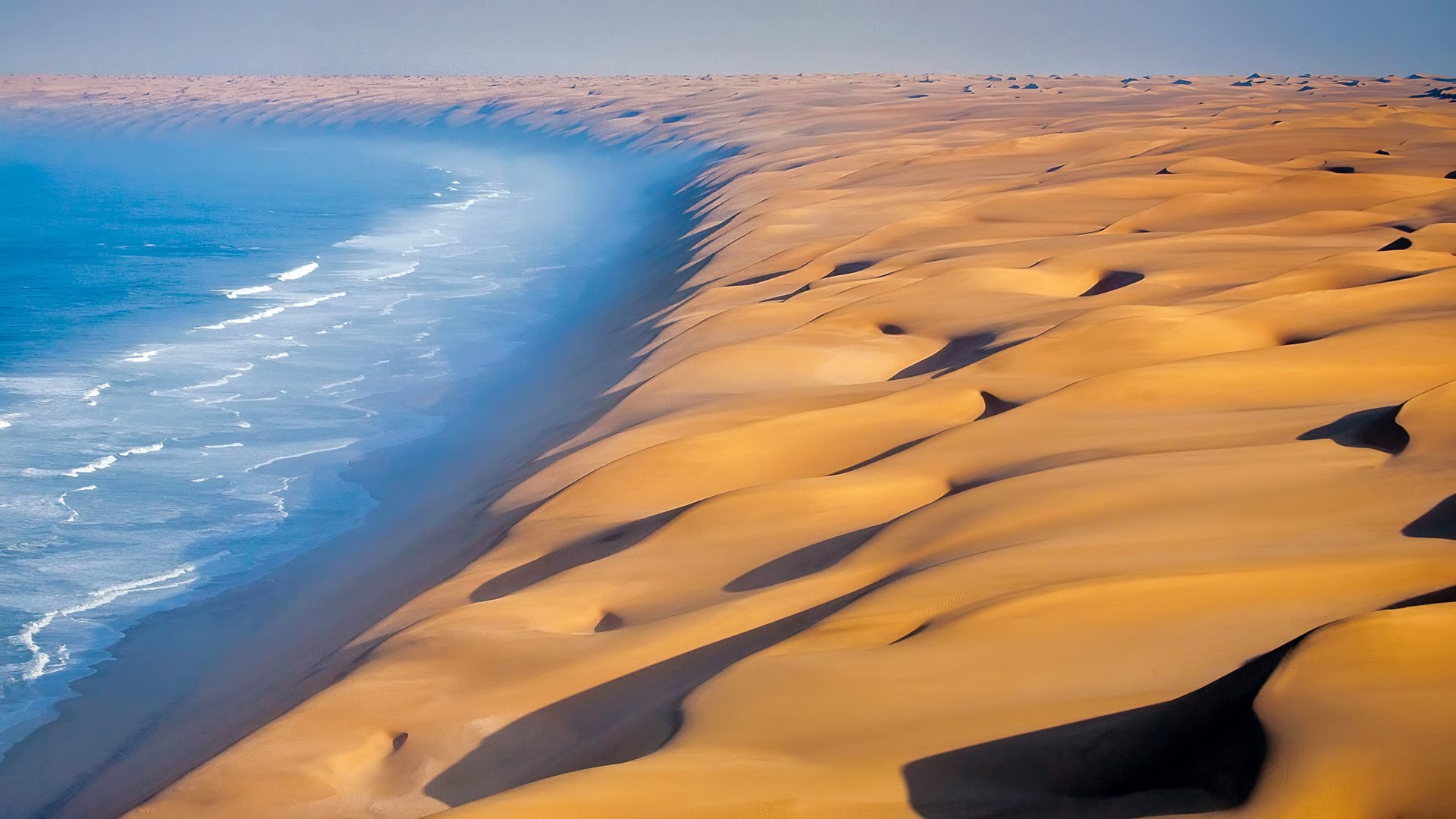Home>Weather and Climate>The Coldest Temperature In Arizona: A Guide To The State’s Chilling Climate
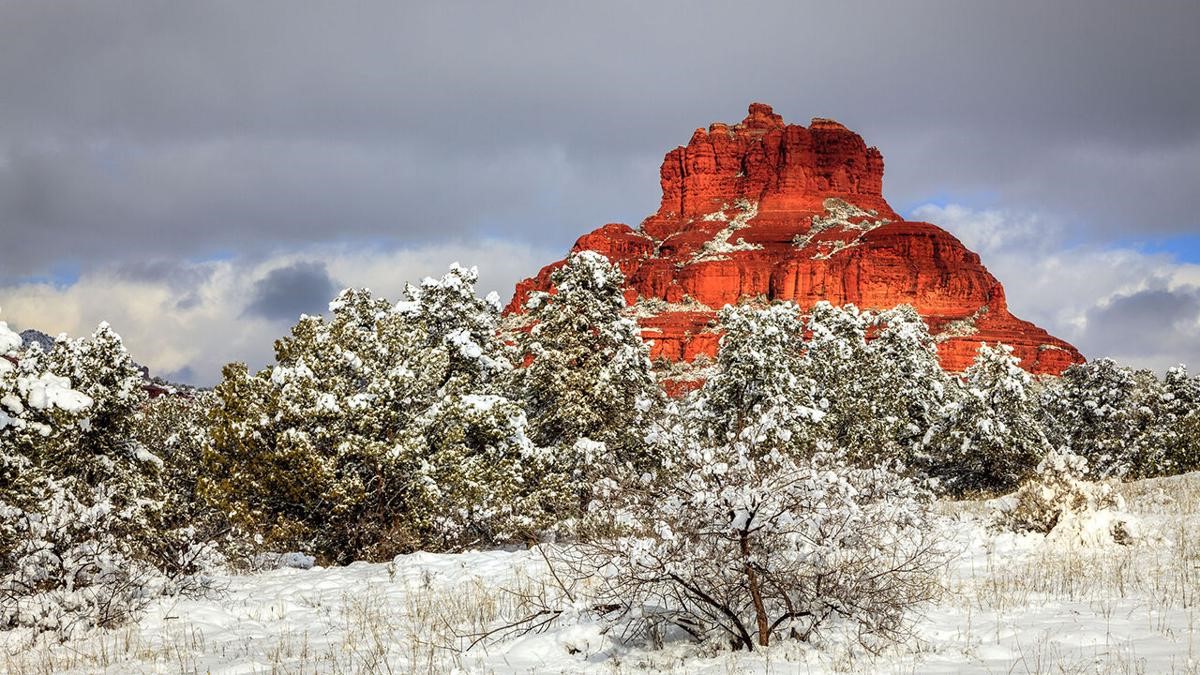

Weather and Climate
The Coldest Temperature In Arizona: A Guide To The State’s Chilling Climate
Modified: March 5, 2024
Discover the coldest temperature in Arizona and explore the state's chilling climate in this comprehensive guide to weather and climate. Uncover the unique weather patterns and extreme temperatures that define Arizona's climate.
(Many of the links in this article redirect to a specific reviewed product. Your purchase of these products through affiliate links helps to generate commission for Temperatures.com, at no extra cost. Learn more)
Table of Contents
Introduction
Arizona, known for its scorching deserts and sweltering summers, may not be the first place that comes to mind when thinking about cold temperatures. However, this southwestern state has its fair share of chilly weather, with some areas experiencing extreme cold snaps that can take residents and visitors by surprise. In this comprehensive guide, we will delve into the coldest temperatures ever recorded in Arizona, explore the factors influencing the state's climate, and provide valuable insights into how these frigid conditions impact the environment and daily life.
From the snow-capped peaks of the San Francisco Mountains to the high-elevation plateaus and valleys, Arizona's diverse topography contributes to a wide range of climates and temperatures. While the state is renowned for its arid and hot conditions, it also boasts regions where winter brings a dramatic shift, blanketing the landscape in snow and ushering in bone-chilling temperatures.
As we embark on this exploration of Arizona's cold climate, we will uncover the historical record of the state's lowest temperatures, shedding light on the remarkable instances when the mercury plummeted to astonishing lows. Moreover, we will examine the impact of these cold spells on the state's delicate ecosystems and wildlife, offering valuable insights into how Arizona's environment copes with and adapts to extreme cold.
Join us as we unravel the intriguing facets of Arizona's climate, from its blistering summers to its surprisingly frosty winters, and gain a deeper understanding of the remarkable diversity that shapes this captivating state's weather patterns.
Understanding Arizona's Climate
Arizona's climate is characterized by its remarkable diversity, encompassing a wide spectrum of temperature ranges and weather patterns. The state's unique geography, which includes deserts, plateaus, and mountain ranges, contributes to this rich tapestry of climates. The Sonoran Desert, located in the southwestern part of the state, is renowned for its scorching summers and mild winters, while the Colorado Plateau in the northern region experiences a more varied climate, with higher elevations leading to cooler temperatures and even snowfall during the winter months.
The Grand Canyon State's elevation plays a pivotal role in shaping its climate. The higher elevations in northern Arizona, including the Colorado Plateau and the San Francisco Peaks, bring cooler temperatures and more precipitation, creating a stark contrast to the low-lying deserts in the southern part of the state. This variation in elevation results in a diverse array of microclimates, each with its own distinct weather patterns and temperature fluctuations.
Arizona's climate is also influenced by its proximity to the Pacific Ocean and the Gulf of California. During the summer, the state experiences the North American Monsoon, characterized by an influx of moisture from the Gulf of California, which brings thunderstorms and heavy rainfall to certain parts of the state. This monsoonal pattern contributes to the seasonal variation in Arizona's climate, with the summer months bringing a dramatic shift from dry heat to intense thunderstorms and localized flooding.
In addition to these regional factors, Arizona's climate is also impacted by larger-scale weather phenomena, such as the El Niño and La Niña patterns in the Pacific Ocean. These oceanic oscillations can influence the distribution of precipitation and temperature across the southwestern United States, including Arizona, leading to periods of above-average or below-average rainfall and temperature anomalies.
Overall, Arizona's climate is a complex tapestry woven from a multitude of factors, including elevation, geographic location, and larger atmospheric and oceanic patterns. This intricate interplay gives rise to the state's diverse weather conditions, from the searing heat of the deserts to the snow-covered peaks of the high country, making Arizona a captivating and dynamic landscape shaped by its ever-changing climate.
Factors Affecting Temperature in Arizona
Arizona's temperature is influenced by a myriad of factors, each contributing to the state's diverse and dynamic climate. The interplay of these elements shapes the temperature variations experienced across different regions of the state, from the blistering heat of the deserts to the cooler mountainous areas in the north.
-
Elevation: One of the most significant factors impacting temperature in Arizona is elevation. The state's topography features a wide range of elevations, from the low-lying deserts to the high plateaus and mountain ranges. As elevation increases, the temperature generally decreases, leading to cooler conditions in the mountainous regions of northern Arizona. For instance, Flagstaff, situated at an elevation of over 6,900 feet, experiences significantly cooler temperatures compared to Phoenix, which lies at a much lower elevation.
-
Geographic Location: Arizona's proximity to the equator plays a role in determining its temperature patterns. The southern part of the state, closer to the equator, experiences more direct sunlight and higher temperatures, contributing to the scorching heat of the Sonoran Desert. In contrast, the northern regions, further from the equator, receive less direct sunlight, leading to cooler temperatures, especially at higher elevations.
-
Desert Climate: The presence of vast desert expanses, including the Sonoran and Mojave Deserts, significantly influences Arizona's temperature. Desert climates are characterized by extreme temperature differentials between day and night, with intense heat during the day and rapid cooling at night. This diurnal temperature variation is a defining feature of Arizona's desert regions, contributing to the wide temperature range experienced within a 24-hour period.
-
Oceanic and Atmospheric Patterns: Arizona's climate is also influenced by larger-scale weather phenomena, such as the North American Monsoon and oceanic oscillations like El Niño and La Niña. These patterns can bring periods of increased moisture and rainfall, impacting temperature and humidity levels across the state.
-
Urban Heat Island Effect: Urban areas, particularly cities like Phoenix and Tucson, experience the urban heat island effect, where human activities and infrastructure lead to higher temperatures compared to surrounding rural areas. This phenomenon exacerbates the already warm climate in these metropolitan regions, contributing to higher average temperatures and increased heat-related challenges.
Understanding these factors provides valuable insights into the complex dynamics that govern Arizona's temperature variations. By considering the interplay of elevation, geographic location, climatic patterns, and local environmental influences, we gain a deeper appreciation for the diverse and captivating climate that defines the Grand Canyon State.
Historical Record of Coldest Temperatures in Arizona
Arizona's diverse climate, characterized by its scorching deserts and snow-capped mountains, has witnessed some astonishingly low temperatures throughout its history. These record-setting cold snaps offer a fascinating glimpse into the state's capacity for extreme weather, showcasing the remarkable contrast to its more commonly known hot and arid conditions.
One of the most notable instances of frigid temperatures occurred in 1971 when Hawley Lake, located in eastern Arizona, recorded the state's lowest temperature of -40°F (-40°C). This bone-chilling milestone stands as a testament to the intensity of cold that Arizona can experience, particularly in its high-elevation regions. The combination of clear skies, calm winds, and a deep snow cover contributed to the ideal conditions for such an extreme temperature to be reached.
In addition to Hawley Lake's record-setting cold, other parts of Arizona have also witnessed remarkably low temperatures. The mountainous areas in the northern part of the state, including Flagstaff and the Grand Canyon's rim, have seen sub-zero temperatures during severe winter cold snaps. These instances of extreme cold highlight the stark contrast between Arizona's high country and its desert regions, showcasing the state's remarkable climatic diversity.
Furthermore, the historical record of cold temperatures in Arizona underscores the state's vulnerability to sudden and drastic shifts in weather. While Arizona is renowned for its hot and dry climate, these episodes of extreme cold serve as a reminder of the dynamic and unpredictable nature of its weather patterns. The ability to withstand such frigid conditions is a testament to the resilience of Arizona's ecosystems and wildlife, which have adapted to survive in a climate of remarkable contrasts.
As we reflect on the historical record of Arizona's coldest temperatures, we gain a deeper appreciation for the state's capacity to defy expectations and surprise us with its climatic extremes. These remarkable instances of cold serve as a testament to the dynamic and diverse nature of Arizona's climate, offering a compelling counterpoint to its more well-known reputation for heat and aridity.
Impact of Cold Temperatures on Arizona's Environment
The impact of cold temperatures on Arizona's environment is profound and far-reaching, influencing the state's delicate ecosystems, wildlife, and human communities. While Arizona is renowned for its arid and hot climate, the occurrence of extreme cold weather brings about significant consequences that reverberate throughout the natural landscape.
One of the most notable impacts of cold temperatures is the effect on vegetation and agriculture. Frost and freezing temperatures can pose a threat to crops, particularly in the agricultural regions of southern Arizona. Citrus groves and other sensitive crops are vulnerable to damage during cold snaps, impacting the state's agricultural output and the livelihoods of farmers and agricultural workers. Additionally, native plant species, including cacti and desert flora, can suffer damage from freezing temperatures, disrupting the delicate balance of Arizona's desert ecosystems.
The state's wildlife also faces challenges during periods of extreme cold. Cold temperatures can impact the behavior and survival of various animal species, particularly those adapted to Arizona's typically warm climate. Reptiles, such as lizards and snakes, may experience reduced activity or seek shelter to avoid the cold, while mammals and birds must adapt their foraging and thermoregulation strategies to cope with the sudden drop in temperature. Furthermore, cold weather can lead to changes in the availability of food sources and water, affecting the overall ecological dynamics of Arizona's diverse habitats.
In addition to its impact on flora and fauna, cold temperatures can also affect human communities in Arizona. Infrastructure, such as water supply systems and transportation networks, may face challenges due to freezing conditions, leading to disruptions in daily life. Furthermore, residents in rural and high-elevation areas must contend with the practical implications of cold weather, including heating and insulation requirements to ensure comfort and safety during winter cold snaps.
The environmental impact of cold temperatures in Arizona underscores the dynamic and multifaceted nature of the state's climate. While the focus often centers on the heat and aridity of the desert landscapes, the occurrence of extreme cold serves as a reminder of the diverse and sometimes challenging conditions that shape Arizona's environment. Understanding and addressing the repercussions of cold weather on the state's ecosystems and communities is essential for fostering resilience and sustainability in the face of climatic variability.
As we navigate the complexities of Arizona's climate, it becomes evident that the impact of cold temperatures extends beyond mere meteorological phenomena, shaping the intricate web of life that thrives in this captivating and diverse state.
Read more: Average Monthly Temperatures In Arizona
Tips for Dealing with Cold Weather in Arizona
When facing cold weather in Arizona, whether you are a resident or a visitor, it's essential to be prepared and equipped to handle the sudden drop in temperatures. Despite the state's reputation for scorching heat, Arizona's high-elevation regions and occasional winter cold snaps demand a proactive approach to staying safe and comfortable during chilly conditions.
Here are some valuable tips for dealing with cold weather in Arizona:
-
Layer Clothing: Dressing in layers is crucial for adapting to fluctuating temperatures. Start with a moisture-wicking base layer to keep dry, add insulating layers for warmth, and top it off with a windproof and waterproof outer layer to shield against the elements.
-
Protective Gear: Be sure to have cold-weather essentials on hand, including a warm hat, gloves or mittens, and insulated footwear. These items are vital for preserving body heat and safeguarding extremities from the cold.
-
Stay Informed: Keep abreast of weather forecasts and advisories, especially if venturing into Arizona's high-elevation areas during the winter months. Being aware of potential cold fronts and snowfall predictions allows for better preparation and informed decision-making.
-
Vehicle Readiness: If traveling by car, ensure that your vehicle is equipped for cold weather conditions. This includes having snow chains, an emergency kit with blankets and supplies, and maintaining proper tire traction for navigating icy or snow-covered roads.
-
Home Preparations: For residents, it's essential to winterize homes and properties, especially in high-elevation regions prone to freezing temperatures. This may involve insulating pipes, sealing drafts, and ensuring adequate heating systems are in place.
-
Outdoor Activities: When engaging in outdoor activities during cold weather, such as hiking or camping, exercise caution and be mindful of the potential for rapid weather changes. Carry essential supplies, stay hydrated, and be prepared for unexpected shifts in conditions.
-
Wildlife Awareness: Be mindful of Arizona's diverse wildlife and their adaptations to cold weather. Respect wildlife habitats and refrain from disturbing or approaching animals during their winter survival efforts.
By heeding these tips and taking a proactive approach to cold weather preparedness, individuals can navigate Arizona's diverse climate with confidence and resilience. Whether enjoying the winter beauty of the state's high country or simply bracing for a cold spell in the desert, being equipped and informed is key to embracing the full spectrum of Arizona's captivating climate.
Conclusion
In conclusion, Arizona's climate is a captivating tapestry woven from a multitude of factors, including elevation, geographic location, and larger atmospheric and oceanic patterns. The state's remarkable diversity encompasses a wide spectrum of temperature ranges and weather patterns, from the scorching heat of the deserts to the snow-covered peaks of the high country. While Arizona is renowned for its arid and hot conditions, it also boasts regions where winter brings a dramatic shift, blanketing the landscape in snow and ushering in bone-chilling temperatures.
The historical record of Arizona's coldest temperatures, including the astonishing -40°F (-40°C) recorded at Hawley Lake in 1971, serves as a testament to the state's capacity for extreme weather. These remarkable instances of cold stand in stark contrast to Arizona's more commonly known hot and arid conditions, offering a compelling counterpoint to its reputation for heat.
The impact of cold temperatures on Arizona's environment is profound and far-reaching, influencing the state's delicate ecosystems, wildlife, and human communities. From the vulnerability of crops and native plant species to the challenges faced by wildlife and the practical implications for human infrastructure, the repercussions of cold weather underscore the dynamic and multifaceted nature of Arizona's climate.
As individuals navigate the complexities of Arizona's climate, being prepared and equipped to handle sudden drops in temperature is essential. Whether dressing in layers, protecting extremities with warm gear, staying informed about weather forecasts, or ensuring vehicle readiness, proactive measures are crucial for adapting to fluctuating temperatures and embracing the full spectrum of Arizona's captivating climate.
Ultimately, Arizona's climate, with its diverse topography and weather patterns, offers a rich tapestry of experiences, from the intense heat of the deserts to the surprising frosty winters. By gaining a deeper understanding of the factors influencing the state's climate and the impact of extreme cold, individuals can navigate Arizona's dynamic weather with confidence and resilience, embracing the remarkable diversity that shapes this captivating state's weather patterns.
